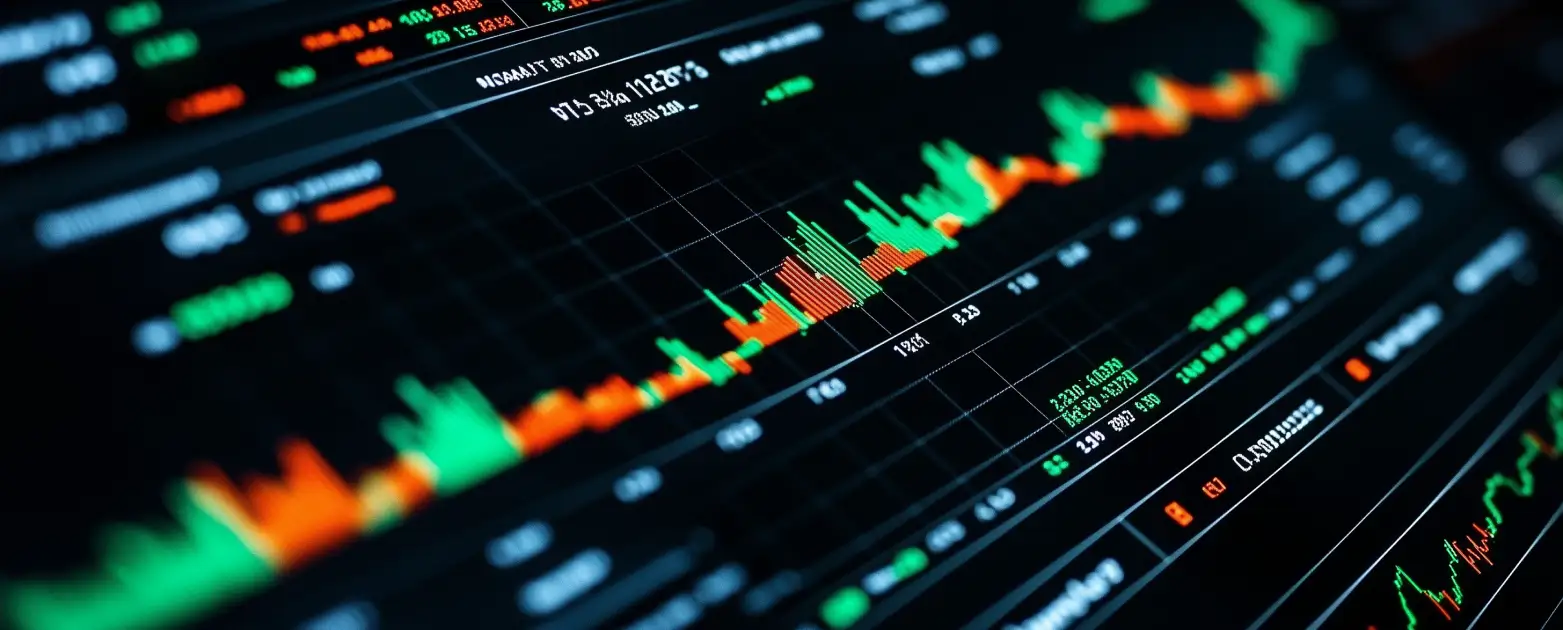Table of Contents
Trading Bots: How to Make a Bot for Trading Cryptocurrency?

Crypto trading has altered substantially due to algorithms and AI. More traders are using automated crypto trading systems to compete and optimize profits in the ever-changing digital marketplaces. These advanced AI-powered tools can close deals faster and more accurately than human brokers.
Modern traders choose crypto trading programs to evaluate market data and perform automated trades using established methods. Regardless of your financial background, developing and using your own trading bot will provide you a huge advantage in the fast-paced cryptocurrency markets.
This book covers everything from choosing the ideal software environment to employing sophisticated trading tactics to create your own crypto trading bot.
What are Crypto Trading Bots?
A cryptocurrency trading bot automates cryptocurrency exchange trades based on criteria and market research. These innovative technologies combine old trading platforms with current artificial intelligence, ushering in a new era of AI trading with astonishing efficiency and precision.
Crypto bots provide market analysis and trade for traders. Human traders are emotional, but an AI-powered bot can watch numerous cryptocurrency pairings across several exchanges without sleeping. This continual market surveillance allows trading algorithms to spot and benefit from opportunities that manual traders might overlook.
AI cryptocurrency trading already includes simple order execution, complex pattern recognition, and predictive analytics. Today's trading bots may study technical indicators, market sentiment, and prior performance to alter their approach. The advancement of AI trading bot technology has made automatic trading systems easier and more profitable for novice and seasoned traders.
In the cryptocurrency market, these bots stand out because they always execute their trade plans. In real time, they can monitor pricing, volume, order books, and social media sentiment. They base their conclusions on arithmetic and data rather than emotions, which might hinder human deals.
Why Build a Trading Bot?
Your own crypto trading bot can improve your trading experience and result in the cryptocurrency market. Several traders use ready-made solutions, but creating a custom AI trading bot has several advantages.
-
Manage and Customize
Creating your own trading bot provides you complete control over your approach. A custom bot lets you utilize strategies tailored to your trading goals and risk tolerance, unlike predefined bots. You may personalize your bot's market interactions, from entry and exit points to risk management.
-
Advanced AI Analysis
AI in your own bot can provide deep analytical skills that manual trading cannot match. These advanced computers can evaluate vast market data in real time, uncovering patterns and opportunities traders may overlook. Your bot can trade 24/7, so you never miss chances, whether from a New Zealand crypto wallet or overseas.
-
Education Benefits
Learning from your bot is another reason to make one. Programming and trading dynamics will be covered throughout development. Even if you trade manually, this understanding may improve you. Understand market dynamics and how automated technologies affect pricing by understanding bots.
-
Improved Security
Security is crucial. Custom trading bots let you control API keys and algorithms. By not entrusting third-party services with your sensitive data and cash, you limit the danger of security breaches or unauthorized trading account access.
-
Adjusting to Market Change
As markets change, custom bots may be updated. You may quickly change your bot's settings and approaches to respond to new market trends or changing conditions, giving you a competitive advantage in the fast-paced world of cryptocurrency trading. Commercial systems may take weeks or months to update.
Planning Your Trading Bot

Before you start creating your crypto trading bot, you need to do some extensive preparation to make sure it meets your specific needs and works well. This important preparation step will determine the viability of your automated trading system.
Describe your trading approach
Before you start using your crypto trade bot, you should do a lot of study to make sure it meets your needs and does what you expect it to do. This important planning step will tell you if your automatic trading system can work.
-
Entry and Exit Conditions
-
Position Sizing Rules
-
Risk Management Parameters
-
Analysis Timing
-
Preferred Cryptocurrencies or Trading Pairs
Select your technology stack
Choosing the right technological foundation for your AI crypto trading system is crucial. Your programming language and framework choices will affect the bot's performance and maintainability. Python and JavaScript are popular choices among developers in crypto trading NZ and throughout the world due to their extensive libraries and versatility, respectively. Consider which NZ trading platforms or offshore exchanges you will connect to, since this may impact your technological requirements.
Design Your Trading Bot Architecture
Plan your bot's structure so that it can efficiently handle all important functions.
-
Data collection and storage
-
Market analysis module
-
Risk management system
-
Order execution mechanism
-
Performance monitoring and alerting system
Consider the resource needs
Evaluate the infrastructure needed to run your trading bot reliably.
-
Server or cloud hosting requirements
-
Processor power requirements
-
Requirements for network connections
-
Data storage capacity and backup mechanisms
Plan for Testing and Validation
Before deploying your AI trading bot with real money, develop a thorough testing strategy:
-
Historical Backtesting Capabilities
-
Paper Trading Functionality
-
Performance Tracking
-
Error Management and Logging
-
Strategy Testing Methods
Security Considerations
Implement robust security measures from the start.
-
API Key Management
-
Access Control Systems
-
Data Encryption
-
Security Monitoring
-
Emergency Shutdown Procedures
By carefully evaluating these variables before beginning development, you will lay a solid foundation for your crypto trading bot and avoid common issues that might cost you time and money later.
Tools and Resources Needed
In order for you to start the process of constructing your trading bots, it is important for you to acquire a few basic tools.
API Access to Crypto Exchanges
Every successful trading bot needs reliable API access. Most crypto exchange APIs let your bot trade. You will require API credentials allowing access to trade, monitor market data, and control orders on NZ-available cryptocurrency exchanges. Different exchanges may influence the performance of the bot depending on their API rights and rate limitations.
Development Environment
Setting up an appropriate development environment is critical for creating and testing your cryptocurrency trading bot. You will need:
-
A dependable code editor or integrated development environment
-
Version control mechanism to track changes.
-
Setting up a programming language (usually Python or JavaScript)
-
Libraries and dependencies needed to integrate the cryptographic API.
-
Frameworks for testing and validating code.
-
Secure storage of sensitive information such as API keys.
Backtesting and Data Analysis Tools
Effective data analysis skills are required for building and enhancing your trading strategy. Your toolset should contain:
-
Backtesting frameworks for simulated trading strategies
-
Tools for data visualization and performance analysis
-
Statistical analysis software for strategy optimization
-
Tools to assess performance during live trade
-
Database solutions to store and manage market data
Step-by-Step Guide to Building a Bot
Build your own AI trading bot from scratch with this entire instruction.
Step 1: Setting Up Your Development Environment
Set up your development environment using equipment. Install Python or Node.js as your main programming language, a code editor, and bitcoin trading libraries. Build a bot project with modules, configuration files, and testing environments. This basis lets your trading bot grow smoothly.
Step 2: Connecting to a Crypto Exchange API
Choose your preferred crypto trading platform—Binance, Coinbase, Kraken, etc. Create and secure API keys for your crypto exchange. Use authentication-handling connection handlers to stabilize exchange connections. Collect basic market data before going on to more sophisticated activities to test the link.
Step 3: Coding the Bot's Core Functions
Build the foundation of your AI bot:
Collect and evaluate market data.
Trading strategy implementation.
Management of orders.
Rules for risk management.
Location tracking.
Monitor performance.
Each module should work independently and smoothly with others. Your AI trading bot should assess market data, make strategy-based decisions, and execute trades.
Step 4: Testing the Bot in a Simulated Environment
Test your trading bot in a controlled environment before risking real money. Verify your bot's decisions with prior data. Testnet settings on many trading platforms let you simulate live trading without investing money. Check your bot's performance, uncover issues, and alter its settings.
Step 5: Deploying the Bot for Live Trading
Once testing proves your bot's reliability, deploy:
Set up secure hosting.
Establish exchange API connections.
Start with modest trade sizes.
Set up monitoring.
Set unusual activity alerts.
Plan for emergency shutdowns.
Use some money to test your AI trading bot in real markets. Assess bot performance and stability by gradually increasing trading volume.
To optimize performance in changing markets, deployments must be monitored and adjusted. To achieve your goals, log your bot's trading activity and analyze its success metrics.
Monitoring and Optimizing Your Bot

Using an AI trading bot to trade cryptocurrency requires constant tracking and tuning to keep it running at its best. This ongoing process makes sure that your bot makes money and can adapt to changes in the market.
Checking on Performance
To keep an eye on your trading bot's success in real time, you need strong tracking tools. A good dashboard should show important numbers like the percentage of wins and losses, the return on investment (ROI), the number of finished trades, the average profit per trade, the maximum drawdown, and the timeframe for keeping a position. Whether you're trading New Zealand markets or foreign exchanges, these measures will help you determine how effectively your bot performs under various market situations.
Risk Management
Implement strong risk management measures to protect your capital. Your AI bot should automatically track position sizes and total exposure while imposing stop-loss orders. The system has to appropriately control trading frequency, leverage ratios, and account balance continual monitoring. This is especially important when using trading platforms in New Zealand or abroad exchanges as market volatility might rapidly influence your trading results.
Optimizing Strategy
The performance of your bot in online trading depends on constant strategy improvement. Reviewing past performance data using this method helps one find both successful and unsuccessful tendencies. Your optimization plan should call for changing variables to match the state of the market and running new ideas in virtual environments. Continuous study of outcomes over multiple timeframes allows you to fine-tune entry and exit locations to increase overall performance.
Technical Maintenance
Regular maintenance will keep your New Zealand cryptocurrency dealing business running smoothly. This includes keeping an eye on system resources and making changes to API links on a daily basis. Regular checks of the data make sure that the system works reliably, and testing the backup systems on a regular basis keeps them stable. Security standards must be maintained and updated to keep your trading system safe from any attacks.
Emergency protocols
Here are the important protocols your bot should have in place for different scenarios:
-
Market volatility soars
-
Technical failures
-
API disconnections
-
Unusual trading patterns
-
System overload.
-
Security breaches
If watched and optimized regularly, your AI trading bot can thrive in the ever-changing cryptocurrency markets. Effective automated trading requires ongoing maintenance and development.
Conclusion
Interesting changes are coming from bots and AI in bitcoin trading. AI trading bots help crypto traders navigate the volatile cryptocurrency market by combining technical and market knowledge. Building automated, systematic trading takes time and effort, but it pays off. The potential advantages warrant the effort to automate systematic trading.
Crypto trading is being transformed by AI bots. Creating your own bot may teach you trade mechanics and market dynamics, whether you're an accomplished coder or new to automated trading. Even without automated tools, creative and improving experience makes you a better crypto trader.
Successful AI crypto trading demands constant monitoring, maintenance, and improvement. Building and improving your trading bot is not a "set it and forget it" approach. An AI trading bot must adapt and optimize to be successful and profitable as markets change and new opportunities arise.
This video will help you start automatic crypto trading by teaching you the best techniques. The future of trading depends on combining human expertise with artificial intelligence to create effective solutions in the fast-paced, 24-hour digital asset environment.
FAQ
Can trading bots that use AI make good trades in the cryptocurrency market?
+
-
What's the difference between automated crypto trading on a trade site in New Zealand and one in another country?
+
-
Utilizing an AI crypto trading bot, how much capital should I start with?
+
-
Does creating an automated trading bot in New Zealand call for programming knowledge?
+
-
How do mobile trading platforms work with automated trading systems?
+
-
What security precautions should I take while running a trading bot on NZ cryptocurrency exchange platforms?
+
-
Should my trading bot be run via a cloud platform or locally?
+
-